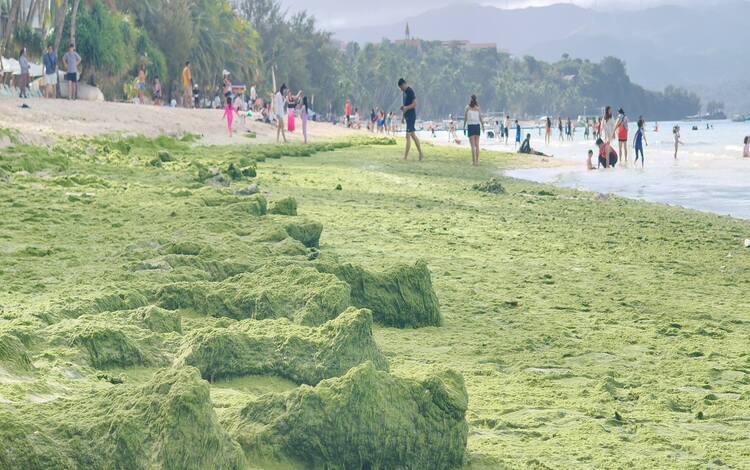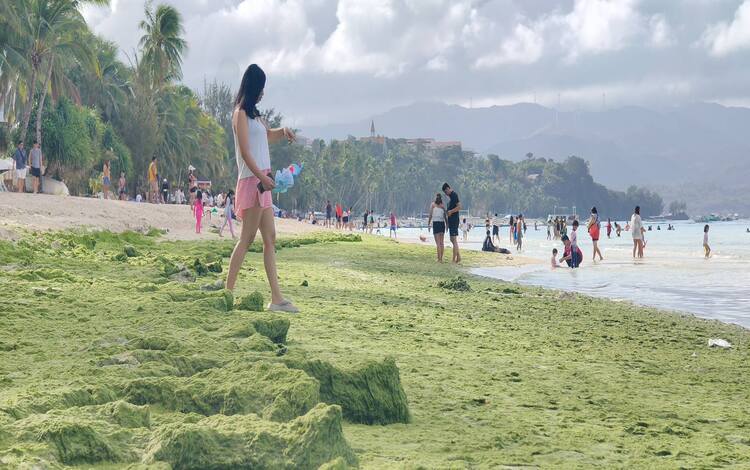As of February 19, 2025, Boracay Island’s iconic white-sand beaches are experiencing a significant presence of green algae, locally known as lumot. This seasonal phenomenon typically occurs from February to May, coinciding with the island’s dry season.

Netizen Ronny Francisco Saron recently shared photos on social media, highlighting the extent of the algal bloom. Observations indicate that the bloom has intensified, with thick layers of dark green algae covering the shores as early as February 7, 2025. Many tourists have expressed surprise and concern over the altered appearance of the beaches, noting the limited availability of clean areas for swimming. While lumot season is an annual occurrence, its impact on tourism and the island’s aesthetics remains a topic of discussion.
Boracay Island is currently experiencing mostly cloudy and breezy weather, with occasional showers. Temperatures range from a high of 84°F (29°C) to a low of 78°F (26°C).

Causes of the Algal Bloom
The proliferation of lumot is influenced by both natural and human-induced factors. Warmer sea temperatures during the dry season create ideal conditions for algae growth. Additionally, nutrient runoff from inadequate sewage treatment, fertilizers, and other human activities contributes to the nutrient-rich environment that fuels these algal blooms.
In response to the recurring algae problem, local authorities and environmentalists have been implementing measures to mitigate its impact. Efforts include:
- Improving waste management systems
- Strengthening enforcement of environmental regulations
- Educating residents and visitors on sustainable practices to reduce nutrient runoff
Visitors planning a trip to Boracay during the lumot season are advised to manage their expectations. If beach conditions are affected, they can explore alternative activities such as water sports away from the shoreline or visiting less-affected areas of the island.
